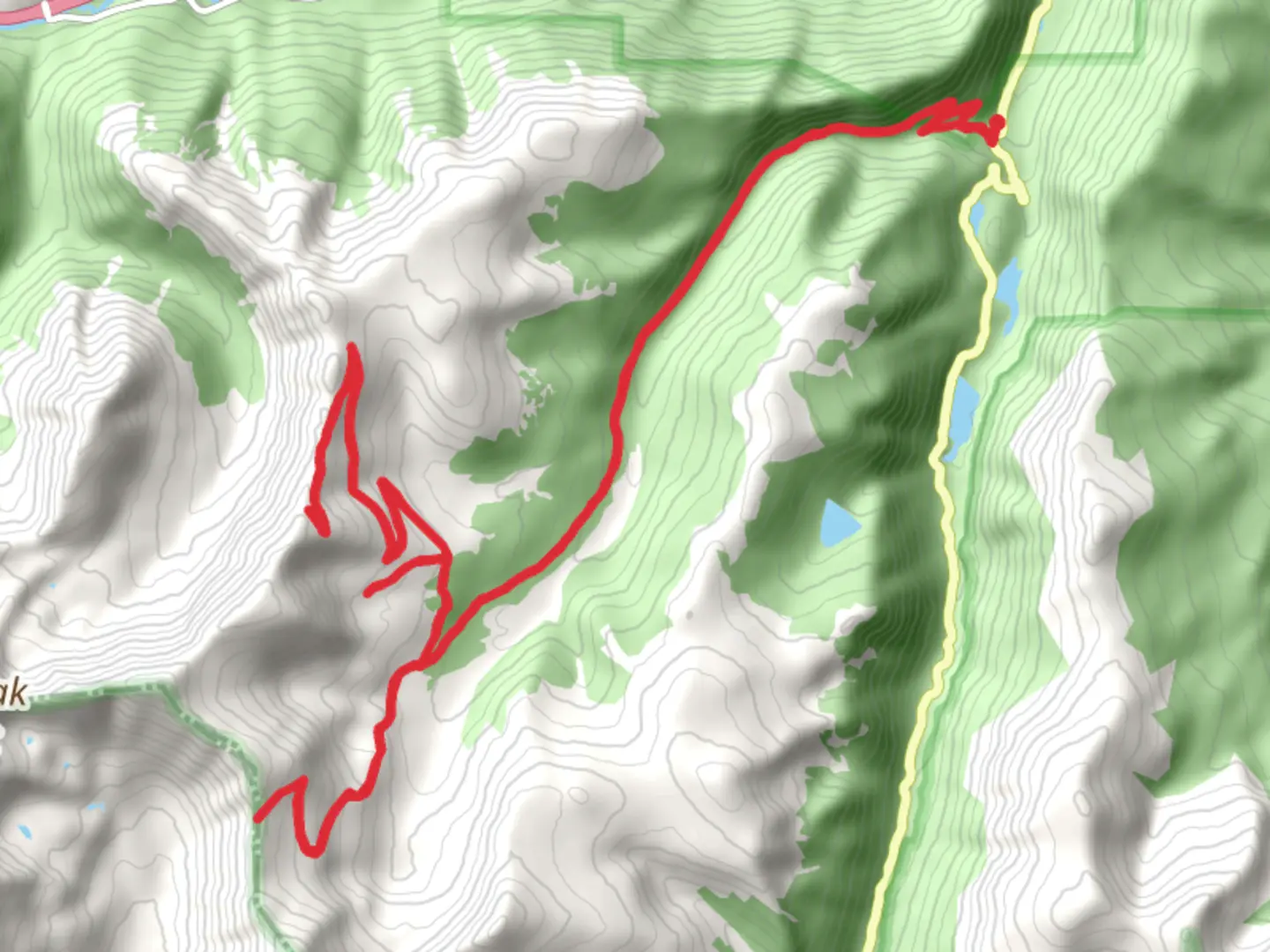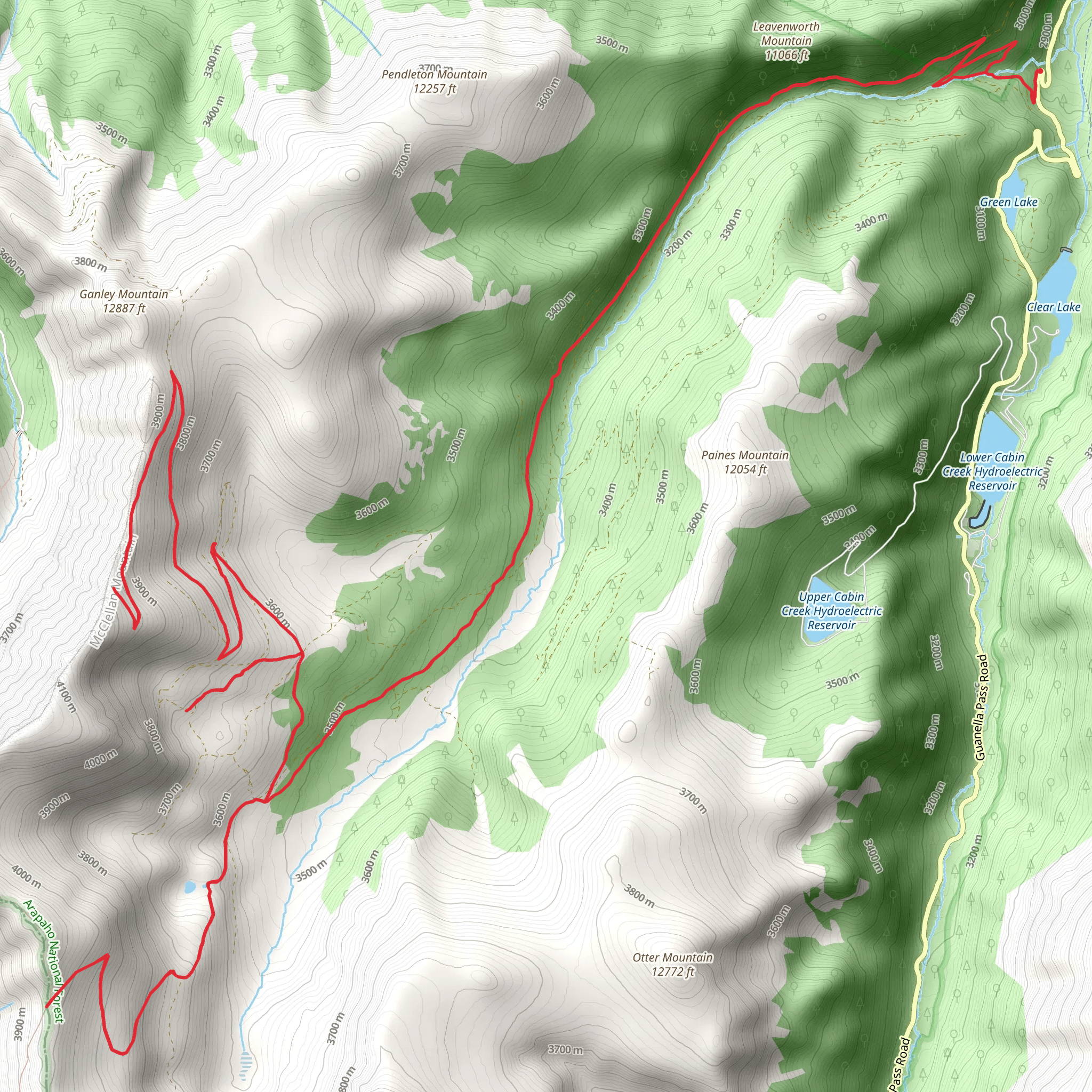
Download
Preview
Add to list
More
43.4 km
~2 day
1665 m
Loop
“Experience breathtaking views and rich history on the challenging Argentine Pass loop in Colorado's Rockies.”
Nestled in the heart of the Rocky Mountains, the Argentine Pass and Argentine Central Railroad Grade Trail offers a challenging yet rewarding adventure for seasoned hikers. This loop trail spans approximately 43 kilometers (about 27 miles) and features an elevation gain of around 1,600 meters (5,250 feet), making it an extra difficult trek that demands preparation and resilience.
Getting There
The trailhead is conveniently located near Clear Creek County, Colorado. For those traveling by car, you can reach the starting point by taking I-70 west from Denver, exiting at Georgetown, and following Guanella Pass Road to the trailhead. Parking is available, but it can fill up quickly, especially during peak hiking seasons. Public transport options are limited, so driving is the most reliable way to access the trailhead.
Trail Overview
The Argentine Pass and Argentine Central Railroad Grade Trail is a loop that combines rugged mountain paths with historical railroad grades. The trail begins with a steady ascent through dense forests, offering glimpses of the surrounding peaks. As you climb, the trees thin out, revealing expansive alpine meadows dotted with wildflowers during the summer months.
#### Historical Significance
This trail is steeped in history, as it follows the route of the Argentine Central Railroad, which was constructed in the late 19th century to transport silver ore from the mines in the area. Remnants of the railroad, including old tracks and ties, can still be seen along the trail, providing a tangible connection to Colorado's mining past. The Argentine Pass itself was once a vital route for miners and traders crossing the Continental Divide.
#### Key Landmarks and Natural Features
As you approach the summit of Argentine Pass, at an elevation of approximately 4,023 meters (13,200 feet), you'll be rewarded with breathtaking panoramic views of the surrounding mountain ranges. On a clear day, you can see as far as the Front Range to the east and the Gore Range to the west. The pass is one of the highest in Colorado, offering a unique vantage point for photography and reflection.
Descending from the pass, the trail follows the old railroad grade, which provides a more gradual descent and a chance to appreciate the engineering feats of the past. Keep an eye out for wildlife, as the area is home to marmots, pikas, and occasionally, mountain goats. Birdwatchers may also spot golden eagles soaring above the ridges.
Navigation and Safety
Given the trail's difficulty and high elevation, it's crucial to be well-prepared. Weather conditions can change rapidly, so pack layers and be ready for sudden temperature drops or storms. The trail can be challenging to navigate, especially in areas where the path is less defined. Utilizing the HiiKER app for navigation is highly recommended to ensure you stay on track.
Water sources are scarce along the trail, so carry enough water for the entire hike or bring a reliable water filtration system. Due to the trail's elevation and exposure, hikers should be aware of the symptoms of altitude sickness and take necessary precautions.
Final Preparations
Before embarking on this adventure, ensure you have the appropriate gear, including sturdy hiking boots, trekking poles, and a detailed map or GPS device. The Argentine Pass and Argentine Central Railroad Grade Trail is a demanding journey, but for those who are prepared, it offers an unforgettable experience through Colorado's rich history and stunning natural beauty.
What to expect?
Activity types
Comments and Reviews
User comments, reviews and discussions about the Argentine Pass and Argentine Central Railroad Grade Trail, Colorado.
average rating out of 5
0 rating(s)
